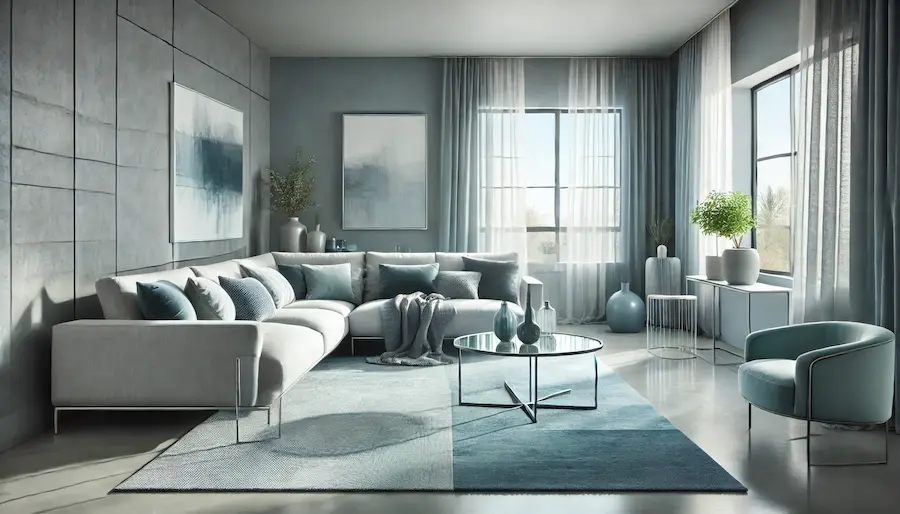A cool palette living room incorporates colors such as blues, greens, and purples to create a serene and refreshing atmosphere.
History and Origins of Cool Palette Design
Cool color schemes have been utilized in interior design to evoke tranquility and spaciousness. Historically, these hues have been associated with calmness and relaxation, making them popular choices for living spaces intended for unwinding.
Key Features of a Cool Palette Living Room
- Color Selection: Incorporate shades of blue, green, and purple to establish a cool ambiance. These colors can be applied to walls, furniture, and accessories to envelop the room in a refreshing atmosphere.
- Texture and Materials: Utilize materials such as glass, metal, and light-colored woods to enhance the cool aesthetic. Elements like glass coffee tables, metal light fixtures, and pale wooden furniture contribute to a serene environment.
- Lighting: Opt for lighting that complements the cool color scheme. Natural light enhances the freshness of cool colors, while soft, ambient lighting from fixtures with cool-toned bulbs can maintain the tranquil atmosphere during evenings.
- Accent Pieces: Incorporate decor items such as cushions, rugs, and artwork in cool hues to tie the room together. For example, a teal throw pillow or a lavender-patterned area rug can add pops of color that reinforce the cool palette.
Applications of Cool Palette Design in Living Rooms
- Monochromatic Schemes: Employing varying shades of a single cool color can create a harmonious and sophisticated look. For instance, combining light and dark blues can add depth to the room.
- Complementary Colors: Pairing cool colors with their warm counterparts can create a balanced and dynamic space. For example, accents of soft pink can complement a predominantly light blue room.
- Natural Elements: Incorporating plants can enhance the cool palette by adding natural green tones, contributing to a refreshing and lively atmosphere.
Considerations When Designing a Cool Palette Living Room
- Balance: Ensure a balance between cool colors and neutral tones to prevent the space from feeling too cold or uninviting. Incorporating neutral elements like white or gray can add warmth and balance.
- Texture Variation: Incorporate different textures to add depth and interest to the space, preventing it from appearing flat. Mixing materials like velvet, silk, and linen can enhance the tactile experience.
- Personal Touches: Incorporate personal items and decor that reflect your style to make the space feel inviting and unique, even within a cool color scheme. This personalization prevents the room from feeling impersonal or overly staged.
Conclusion
A cool palette living room offers a tranquil and refreshing aesthetic that can adapt to various design preferences. By thoughtfully selecting shades, textures, and accents within cool color families, you can create a space that is both elegant and inviting.
